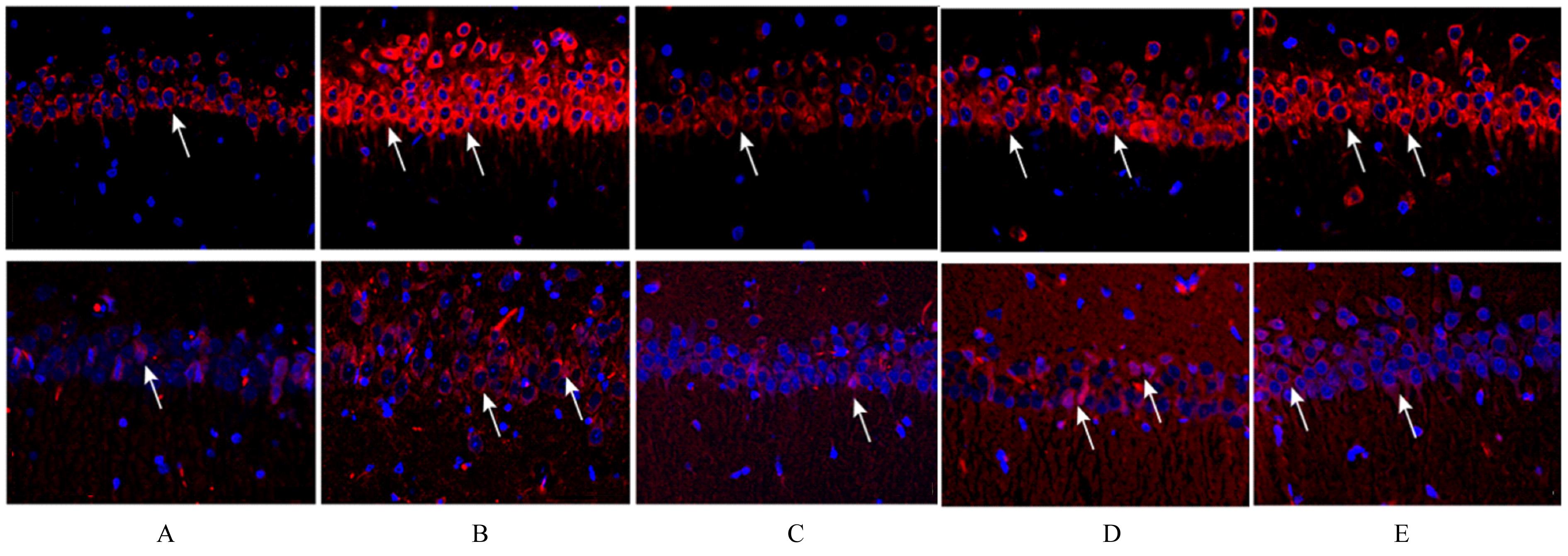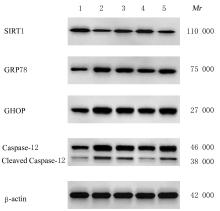| 1 |
DUBOVSKY S L, GHOSH B M, SEROTTE J C,et al. Psychotic depression: diagnosis, differential diagnosis, and treatment[J]. Psychother Psychosom,2021,90(3):160-177.
|
| 2 |
WANG S D, XU X H, JU X,et al. Melatonin ameliorated CUMS-induced depression-like behavior via restoring endoplasmic reticulum stress in rat hippocampus[J]. Neuroreport,2021,32(1):8-15.
|
| 3 |
GHASEMZADEH RAHBARDAR M, HEMADEH B, RAZAVI B M,et al. Effect of carnosic acid on acrylamide induced neurotoxicity: in vivo and in vitro experiments[J]. Drug Chem Toxicol,2022,45(4):1528-1535.
|
| 4 |
DE O M R. Carnosic acid as a promising agent in protecting mitochondria of brain cells[J]. Mol Neurobiol,2018,55(8):6687-6699.
|
| 5 |
AZHAR M, ZENG G R, AHMED A,et al. Carnosic acid ameliorates depressive-like symptoms along with the modulation of FGF9 in the hippocampus of middle carotid artery occlusion-induced sprague dawley rats[J]. Phytother Res,2021,35(1):384-391.
|
| 6 |
KANG K, TARCHICK M J, YU X S,et al. Carnosic acid slows photoreceptor degeneration in the Pde6b(rd10) mouse model of retinitis pigmentosa[J]. Sci Rep,2016,6:22632.
|
| 7 |
MIN K J, JUNG K J, KWON T K. Carnosic acid induces apoptosis through reactive oxygen species-mediated endoplasmic reticulum stress induction in human renal carcinoma caki cells[J]. J Cancer Prev,2014,19(3):170-178.
|
| 8 |
LIU S Y, LI D, ZENG H Y,et al. Hydrogen sulfide inhibits chronic unpredictable mild stress-induced depressive-like behavior by upregulation of Sirt-1: involvement in suppression of hippocampal endoplasmic reticulum stress[J]. Int J Neuropsychopharmacol,2017,20(11):867-876.
|
| 9 |
LIAO D H, CHEN Y, GUO Y J,et al. Salvianolic acid B improves chronic mild stress-induced depressive behaviors in rats: involvement of AMPK/SIRT1 signaling pathway[J]. J Inflamm Res,2020,13:195-206.
|
| 10 |
TENG L F, FAN L F, PENG Y J,et al. Carnosic acid mitigates early brain injury after subarachnoid hemorrhage: possible involvement of the SIRT1/p66shc signaling pathway[J]. Front Neurosci,2019,13:26.
|
| 11 |
ZHAO Y, SHI X, DING C C,et al. Carnosic acid prevents COL1A2 transcription through the reduction of Smad3 acetylation via the AMPKα1/SIRT1 pathway[J].Toxicol Appl Pharmacol,2018,339:172-180.
|
| 12 |
GAO L L, SHAN W, ZENG W J,et al. Carnosic acid alleviates chronic alcoholic liver injury by regulating the SIRT1/ChREBP and SIRT1/p66shc pathways in rats[J]. Mol Nutr Food Res,2016,60(9):1902-1911.
|
| 13 |
王 钦,蔡萧君,颉彦鹏,等. 基于BDNF/Trk B/CREB通路探讨柴胡加龙骨牡蛎汤对2型糖尿病合并抑郁大鼠海马的影响及其机制研究[J]. 中药材,2021,44(12):2922-2927.
|
| 14 |
WANG X Q, TANG Y H, ZENG G R,et al. Carnosic acid alleviates depression-like behaviors on chronic mild stressed mice via PPAR-γ-dependent regulation of ADPN/FGF9 pathway[J]. Psychopharmacology (Berl),2021,238(2):501-516.
|
| 15 |
WANG Y, SU N X, PAN S G,et al. Fengbaisan suppresses endoplasmic reticulum stress by up-regulating SIRT1 expression to protect rats with chronic obstructive pulmonary diseases[J]. Pharm Biol,2020,58(1):878-885.
|
| 16 |
唐文娟,范红艳,张露文,等. N-棕榈酰乙醇胺通过调控前额叶皮质PPARα通路抗大鼠抑郁样行为[J]. 中国病理生理杂志,2020,36(3):451-460.
|
| 17 |
ANTONIUK S, BIJATA M, PONIMASKIN E,et al. Chronic unpredictable mild stress for modeling depression in rodents: Meta-analysis of model reliability[J]. Neurosci Biobehav Rev,2019,99:101-116.
|
| 18 |
肖 斌,任 鹏,李明月,等. 海马齿状回的内质网应激参与AD模型大鼠空间学习记忆损伤的机制[J]. 中国病理生理杂志,2021,37(7):1163-1170.
|
| 19 |
MUNEER A, SHAMSHER KHAN R M. Endoplasmic reticulum stress: implications for neuropsychiatric disorders[J]. Chonnam Med J,2019,55(1):8-19.
|
| 20 |
KOWALCZYK M, MAJSTEREK I, GAŁECKI P,et al. The role of the endoplasmic reticulum stress in depression[J]. Psychiatr Pol,2020,54(3):499-508.
|
| 21 |
WANG F Q, YAO S L, XIA H F. SIRT1 is a key regulatory target for the treatment of the endoplasmic reticulum stress-related organ damage[J]. Biomed Pharmacother,2020,130:110601.
|
| 22 |
ABE-HIGUCHI N, UCHIDA S, YAMAGATA H,et al.Hippocampal sirtuin 1 signaling mediates depression-like behavior[J].Biol Psychiatry,2016,80(11):815-826.
|
| 23 |
SHEN J D, ZHANG Y W, WANG B Y,et al. Effects of resveratrol on the levels of ATP, 5-HT and GAP-43 in the hippocampus of mice exposed to chronic unpredictable mild stress[J]. Neurosci Lett,2020,735:135232.
|
| 24 |
HU T, SHI J J, FANG J S,et al. Quercetin ameliorates diabetic encephalopathy through SIRT1/ER stress pathway in db/db mice[J]. Aging (Albany NY),2020,12(8):7015-7029.
|
| 25 |
ZHANG J J, NING L J, WANG J P. Dietary quercetin attenuates depressive-like behaviors by inhibiting astrocyte reactivation in response to stress[J]. Biochem Biophys Res Commun,2020,533(4):1338-1346.
|
| 26 |
ZHANG Y, ZHAO Q H, LI X H,et al. Dexmedetomidine reversed hypoxia/reoxygenation injury-induced oxidative stress and endoplasmic reticulum stress-dependent apoptosis of cardiomyocytes via SIRT1/CHOP signaling pathway[J]. Mol Cell Biochem,2021,476(7):2803-2812.
|
 ),Xiangmin DENG3,Xu DING1
),Xiangmin DENG3,Xu DING1









